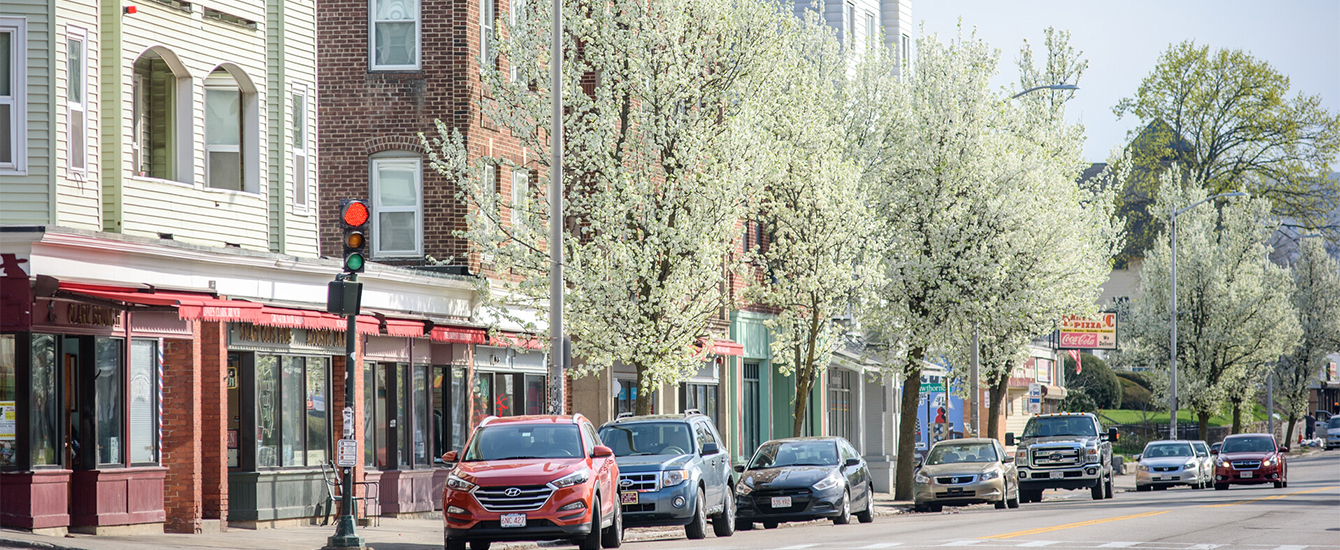The history of Main South shows how a once thriving neighborhood declined because of post-World War II urban trends affecting cities nationwide.
History of Main South

Main South’s beginnings can be traced to the late 1840s when real estate developer Eli Thayer bought the pastures along south Main Street in anticipation of rapid growth in Worcester. Thayer was an anti-slavery activist, and he sold off his land without developing it to pay for plans to establish Yankee strongholds in states bordering the South.
From the 1840s, Main South grew slowly, reaching the area around Clark University in the 1880s and 1890s, when Jonas Clark purchased the first piece of land for the campus bearing his name. This gradual expansion left Main South with an eclectic blend of architectural styles representing different historical periods. By 1890, Main South developed into a neighborhood of major industry, commercial establishments and hundreds of new multi-unit housing structures.
The neighborhood thrived until the 1950s, when it began experiencing serious decline similar to that occurring in other New England towns with industrial bases as residents moved out to the suburbs. The housing stock declined and rents in relation to income increased, while crime and poverty came to be viewed as serious problems.
Much of the physical structure of the neighborhood was determined prior to the end of the 19th century. Today, formerly splendid Victorian structures coexist with traditional three deckers that were built to house the workforce once employed in the now mostly vacant industrial facilities on the eastern and southern perimeters.
